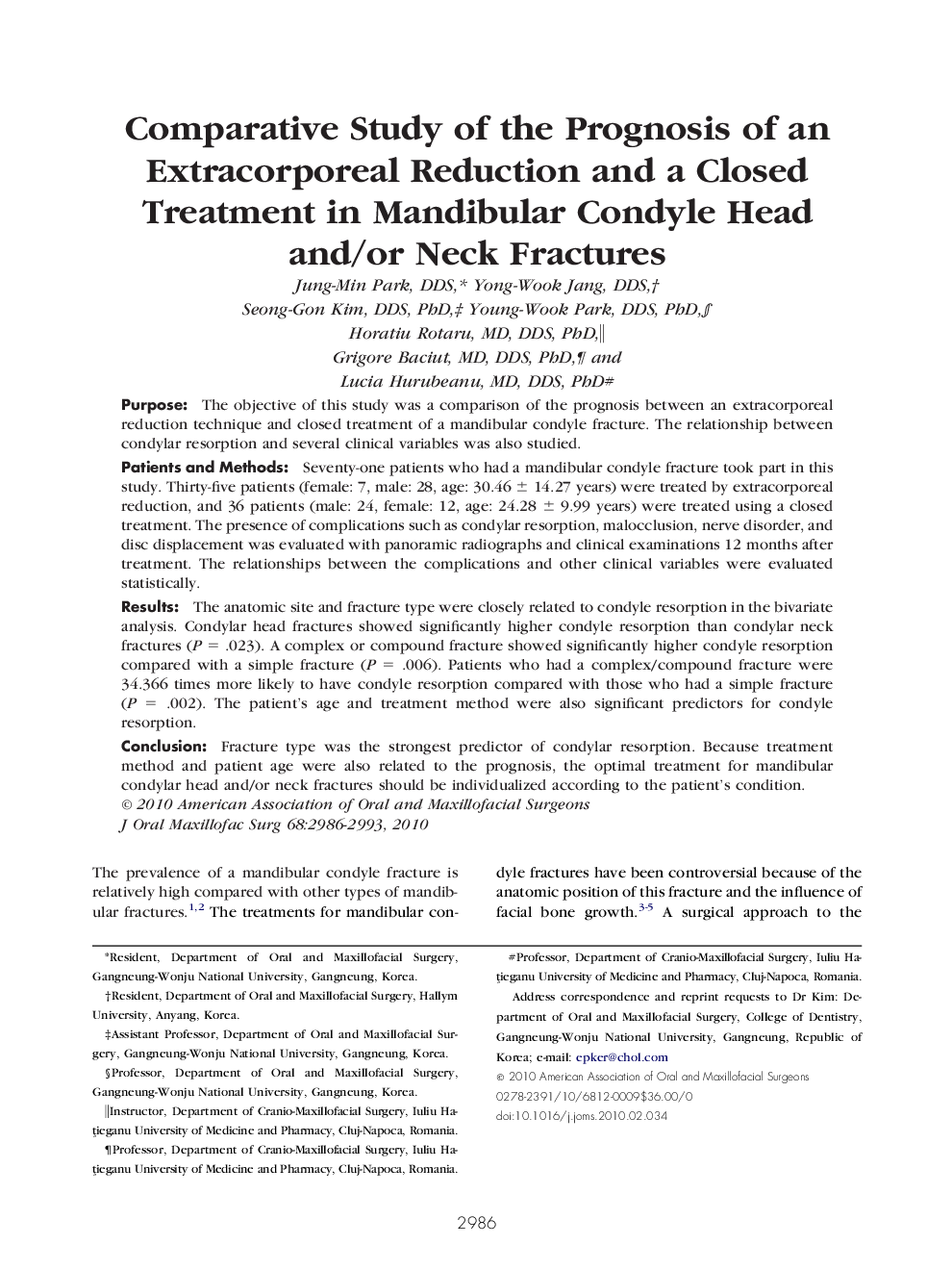| کد مقاله | کد نشریه | سال انتشار | مقاله انگلیسی | نسخه تمام متن |
|---|---|---|---|---|
| 3157021 | 1198155 | 2010 | 8 صفحه PDF | دانلود رایگان |

PurposeThe objective of this study was a comparison of the prognosis between an extracorporeal reduction technique and closed treatment of a mandibular condyle fracture. The relationship between condylar resorption and several clinical variables was also studied.Patients and MethodsSeventy-one patients who had a mandibular condyle fracture took part in this study. Thirty-five patients (female: 7, male: 28, age: 30.46 ± 14.27 years) were treated by extracorporeal reduction, and 36 patients (male: 24, female: 12, age: 24.28 ± 9.99 years) were treated using a closed treatment. The presence of complications such as condylar resorption, malocclusion, nerve disorder, and disc displacement was evaluated with panoramic radiographs and clinical examinations 12 months after treatment. The relationships between the complications and other clinical variables were evaluated statistically.ResultsThe anatomic site and fracture type were closely related to condyle resorption in the bivariate analysis. Condylar head fractures showed significantly higher condyle resorption than condylar neck fractures (P = .023). A complex or compound fracture showed significantly higher condyle resorption compared with a simple fracture (P = .006). Patients who had a complex/compound fracture were 34.366 times more likely to have condyle resorption compared with those who had a simple fracture (P = .002). The patient's age and treatment method were also significant predictors for condyle resorption.ConclusionFracture type was the strongest predictor of condylar resorption. Because treatment method and patient age were also related to the prognosis, the optimal treatment for mandibular condylar head and/or neck fractures should be individualized according to the patient's condition.
Journal: Journal of Oral and Maxillofacial Surgery - Volume 68, Issue 12, December 2010, Pages 2986–2993